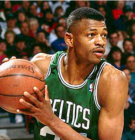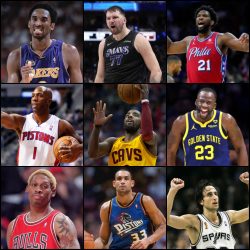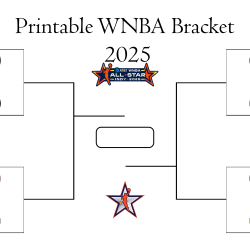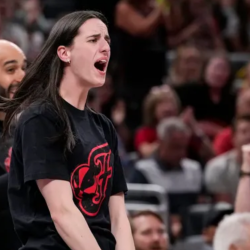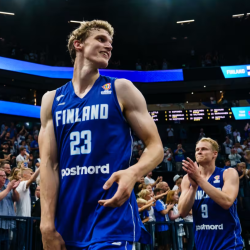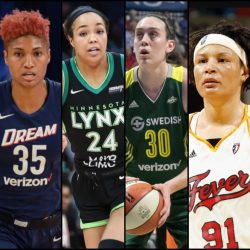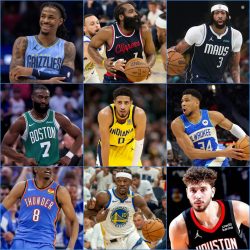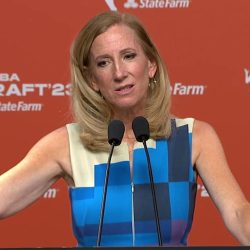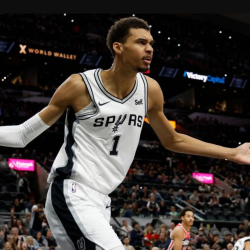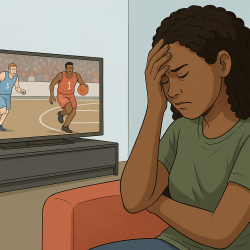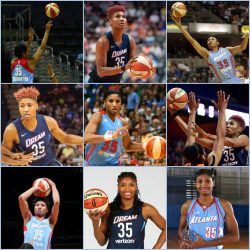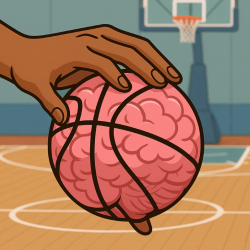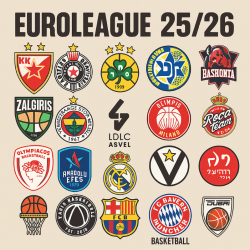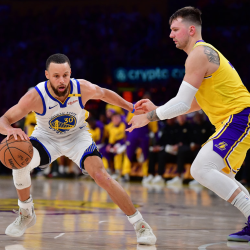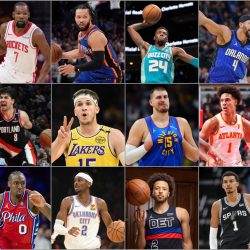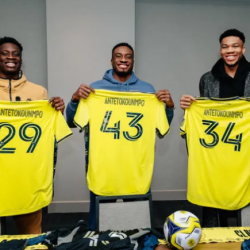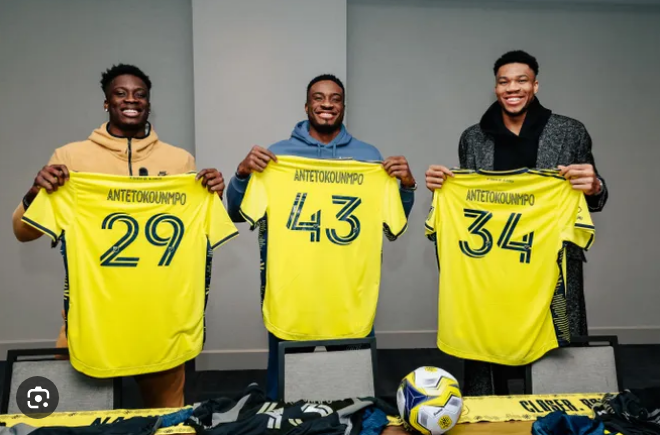
NBA superstars earn hundreds of millions of dollars. They sit comfortably among America’s financial elite not quite in the multi-billionaire stratosphere, but easily in the tier just below the ultra-rich of the United States.
In that, the worlds of basketball and football have long existed in parallel universes, each commanding massive global audiences but rarely intersecting. Yet in recent years, a fascinating trend has emerged: NBA superstars are increasingly making strategic moves into football ownership and investment. This cross-pollination of sporting cultures represents more than just wealthy athletes diversifying their portfolios it signals a profound shift in how modern sports franchises are valued, marketed, and globalized.
LeBron James and the Liverpool Connection: A Blueprint for Success
Perhaps no example better illustrates this phenomenon than LeBron James’ involvement with Liverpool FC. In 2011, when the four-time NBA champion acquired a 2% stake in the Merseyside club through Fenway Sports Group for approximately $6.5 million, many viewed it as an interesting but modest investment. Fast forward to today, and that stake has ballooned in value to an estimated $40-50 million, representing one of the shrewdest financial moves in modern sports history.
James’ partnership with Liverpool has proven mutually beneficial. The club gained access to the NBA icon’s enormous marketing reach, particularly in the lucrative American market where football has been steadily growing. Meanwhile, James enhanced his global brand by associating with one of England’s most storied football institutions. The synergy between basketball’s global ambassador and a club with “You’ll Never Walk Alone” as its anthem created a powerful narrative that transcended both sports. This strategic thinking identifying value in cross-sport investments and understanding the interconnected nature of global sports fandom is something that resonates with modern sports enthusiasts who appreciate the analytical side of athletic competition, much like those who engage with platforms such as M88 to explore the strategic dimensions of sports.
The Economics Behind the Crossover
Why are NBA players particularly drawn to football investments? The answer lies in a combination of financial pragmatism and cultural aspiration. Premier League clubs, despite their astronomical player wages, represent relatively stable investment vehicles with consistently appreciating valuations. The league’s global broadcasting reach with games shown in over 200 countries creates a revenue stream that basketball players understand intimately from their own sport’s international expansion.
Moreover, football clubs offer something NBA franchises cannot: accessibility. With only 30 NBA teams and ownership groups that rarely change hands, basketball ownership opportunities are extraordinarily rare. European football, by contrast, presents hundreds of clubs across multiple tiers, many actively seeking investment. For a wealthy athlete looking to leverage their capital and expertise in sports management, football presents a more achievable entry point into ownership.
Beyond LeBron: A Growing Movement
James isn’t alone in recognizing football’s potential. NBA stars past and present have been quietly building football portfolios. Tony Parker, the French NBA legend, invested in ASVEL Basket but also maintains interests in football ventures. More recently, other basketball personalities have explored opportunities in clubs ranging from the English Championship to continental European leagues, recognizing that the global football market offers diverse entry points at various price levels.
Jimmy Butler, for instance, joined an ownership group that invested in FC Burnley of the English Premier League in 2023. Known for his competitiveness and relentless drive, Butler’s move into football ownership felt like an extension of his “grind harder than everyone” ethos. During interviews, he cited the parallels between soccer’s community-driven fandom and basketball’s locker-room brotherhood. His presence at Burnley matches has helped bridge the cultural gap between NBA and Premier League fans, with Butler often using his platform to highlight the business and lifestyle similarities between elite basketball and football professionals.
Giannis Antetokounmpo made his own splash by becoming a minority owner of Nashville SC in Major League Soccer. The two-time MVP and his brothers have long been outspoken about their love of football, crediting their Greek-Nigerian upbringing for instilling it. Giannis described the investment as “a dream that connects our roots,” emphasizing how the global nature of football aligns with his personal story of perseverance and identity. His involvement also reflects a new generation of athletes who view sports investment as a way to expand influence across continents, not just leagues.
In 2020, Kevin Durant became a minority owner of the Philadelphia Union, a Major League Soccer team. Through his company Thirty Five Ventures, Durant acquired an estimated 5% ownership stake, with an option to increase it in the future. He’s been vocal about his belief in soccer’s growing popularity in the U.S. and its potential as a long-term global investment. Durant said he was drawn to the Union’s community-driven approach and the parallels between soccer’s creativity and basketball’s flow.
This trend reflects a broader understanding among elite athletes that their brands are truly global. An NBA player’s jersey might sell in Shanghai, but a football club offers a different type of community connection one rooted in locality yet broadcast worldwide. It’s a unique combination that savvy investors recognize as increasingly valuable in our interconnected world.
Cultural Exchange and Marketing Synergies
The collision of basketball and football cultures has created unexpected marketing opportunities. When NBA stars attend football matches LeBron at Anfield, or Drake courtside at Arsenal the social media engagement transcends both sports’ traditional audiences. These moments generate millions of impressions, introducing football to basketball fans and vice versa. For the clubs, having globally recognized figures from other sports associated with their brand enhances their appeal to younger, more diverse demographics.
The merchandise collaborations have been equally innovative. Liverpool’s partnership with LeBron led to special edition apparel that blended basketball and football aesthetics, appealing to fans of both sports. These crossover products represent a new frontier in sports marketing, where the boundaries between different athletic disciplines become deliberately blurred to maximize commercial reach.
As we move deeper into 2025, the trend shows no signs of slowing. With NBA salaries continuing to rise and players becoming increasingly sophisticated about wealth management, football investment will likely become more common. We may see NBA stars taking more active roles in club operations, bringing basketball’s analytical approach to player development and performance optimization into football’s traditionally more conservative management structures.
The next generation of crossover investments might involve emerging football markets in the United States, where Major League Soccer continues its rapid expansion, or in Asia, where both sports enjoy massive followings. The key will be finding opportunities where basketball’s marketing prowess and football’s global infrastructure can create something genuinely innovative.
The intersection of football and basketball represents more than just celebrity investors chasing returns. It’s a recognition that in the modern sports landscape, the barriers between disciplines are dissolving, and the smartest athletes understand that their influence and their capital can transcend the games they play. LeBron James’ Liverpool investment wasn’t just lucky timing; it was visionary thinking about how sports, business, and global culture would evolve. As other NBA stars follow this blueprint, we’re witnessing the creation of a new model for athletic entrepreneurship that will define sports ownership for decades to come.
